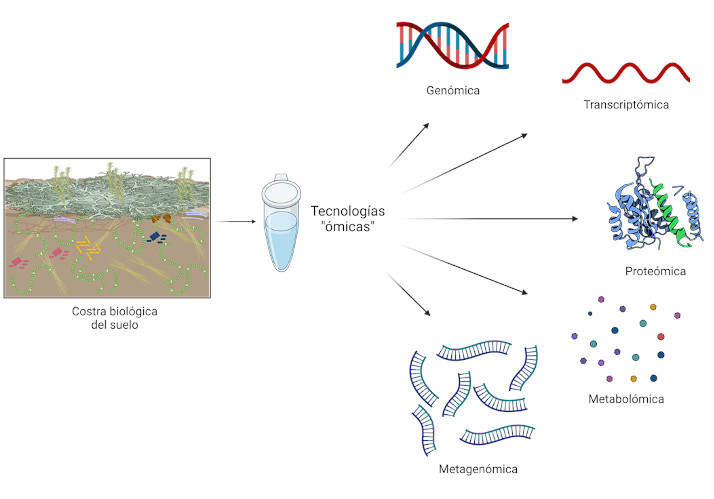Omic technologies for the exploration of the soil biocrust
DOI:
https://doi.org/10.28940/terra.v40i0.1062Keywords:
cyanobacteria, degraded soils, ecological restoration, inoculation, nitrogen fixationAbstract
The "omics" technologies are novel tools that facilitate the study of microbial communities in different ecosystems, particularly the biological soil crust, also called biocrust. These technologies include genomics, transcriptomics, proteomics, metabolomics, and metagenomics, which are used to analyze the diversity and functions carried out by microorganisms through the study of their biomolecules and metabolic pathways. Among the microorganisms that inhabit the biocrust are the cyanobacteria, which are a group of phototrophic bacteria responsible for important processes in the soil, such as the fixation of atmospheric nitrogen, organic carbon, chlorophyll and phycobilin synthesis, as well as the production of exopolysaccharides to improve soil stability and fertility. Therefore, the objective of this review is to explore the diversity and role that these microbial communities play in the biocrust, particularly cyanobacteria, highlighting studies conducted using omics technologies. The knowledge generated in recent years through omics technologies has demonstrated the limited coverage of traditional molecular techniques, resulting in an underestimation of the real diversity of microbial communities. In addition, there has been an improvement in the understanding of the ecological processes developed by the microorganisms for the benefit of the biocrust, as well as the individual and collective functional capacities, which will serve as a baseline to propose important strategies to solve the problem of soil degradation.
Downloads
Publication Facts
Reviewer profiles N/A
Author statements
- Academic society
- Terra Latinoamericana
- Publisher
- Mexican Society of Soil Science, C.A.

















